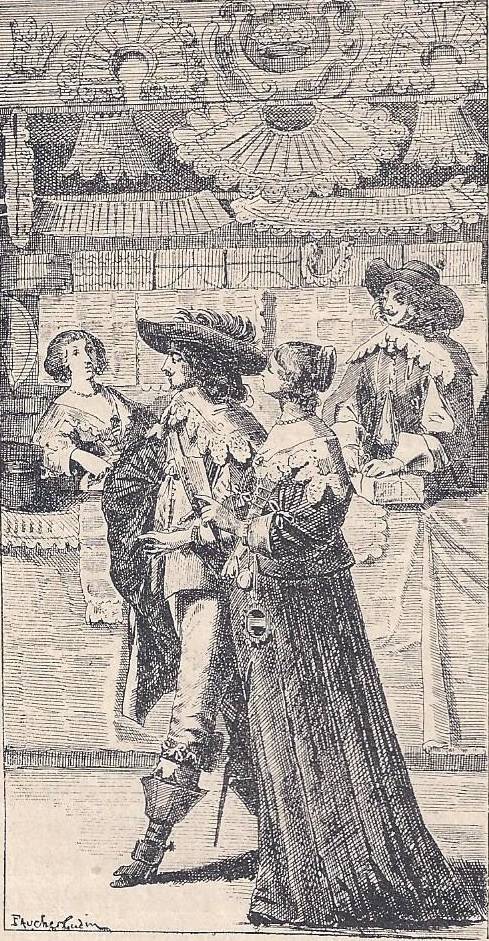Lace always more history
Lace evolution
For several centuries, lace has held an important place in the annals of industry in Italy, France and especially Flanders. It was in the latter country that its manufacture began;
Genoa and Venice followed this example long afterwards; finally France only adopted this industry in the seventeenth century.
However, the appearance of the first lace in France dates from the sixteenth century. Under the reign of Francis I, church dignitaries and women adorned their costumes with a sort of lace made from white linen thread, with large meshes, of workmanship that was more solid than graceful; art was then in its first attempts.
The bourgeois women, and later the peasant women, wore common lace known, because of its price, under the name of bisette or geuse.
Later silk, gold and silver enriched lace. Bourgeois fortunes could not afford the high price of this lace.
Early lace designs imitated the ornaments and shapes of Renaissance architectute.
Luxury, banished for a long time from the court by political events and by the austerity of Sully, thus regained all its splendor, and Richelieu, without openly favoring luxury, gave it free rein. The prodigalities of the nobility, by hastening his ruin, served the plans of the minister who, wishing to destroy him, seemed to take pleasure in letting his victim adorn himself before the sacrifice;
thus lace owed to its novelty, its elegance, and its high price, the favor of the upper classes.

Louis XIII, with a religious rigorism, which contrasted with the jovial appearance of Henry IV, was even more severe, this invasion of luxury, and the prodigalities of the nobility, aroused the solicitude of parliaments, they published in 1629 a famous edict: Regulation on superfluities of clothing, known as the Michaud Code.
This edict limited the expense of table and clothing: article 133 prohibited lace.
"We defend all embroidery of canvas and thread, imitation of embroidery, edging of nets into canvas and cutting of flaps, collars, cuffs, on quintins and other linens, and all cut points, lace and trimmings and other thread works, with a spindle, for men and for women, in whatever kind and manner it may be."
This edict was intended to put an end to the prodigalities which made France dependent, for enormous sums, on the factories of Flanders and Italy; also sixteen years later, Colbert openly encouraged, in France, the manufacture of lace.
It must be believed, however, that this somewhat draconian law was not applied with great rigor, because people did not hesitate to joke a lot.
Several engravings by Abraham Bosse are joyful critiques of the famous edict and the first were certainly a great success, because he repeated several times with variations this same subject of the Courtier following the last edict which removes its collars, its cuffs and all the elegant parts of his court costumes, throwing them away and dressing in clothes so simple, so sparsely decorated, that he looks very bad after this transformation.
Then it is his valet tightening the clothes enriched with trimmings and we read below:
"It is with regret that my master
Leave these beautiful clothes
Sown with rich ornaments
Who made it appear so well.
But, on the other hand, I think
That being miserly as he is,
Certainly the edict pleases him,
For what he pays the expense.
So I'm going to put it in the trunk
All these superfluous clothes,
And although he no longer wears them,
I'm not afraid he'll give them to me".
Finally it is the lady, according to the edict, who washes herself and puts on her dresses without lace, but cannot console herself :
"Although I have enough beauty
To assure without vanity
That there are no women more beautiful,
It seems, however, in my eyes,
Than with gold and lace,
I'm adjusting much better".
We saw lace appear at the court of Louis XIII, where it was less an adornment than a sign of distinction. Better days shone for her with the reign of Louis XIV. Under Louis XV, his favor increased further; but under Louis XVI, whose simple tastes did not fit well with sumptuous habits, gold and silver had almost disappeared from clothing ; adorned with all her graces, Queen Marie-Antoinette affected simplicity in her adjustments; However, lace, more elegant and lighter, had retained its favor.
Before an overthrown throne, before a long and bloody revolution, lace hid itself as if proscribed.
Under the empire, gold and silver embroidery reappeared, but lace was relegated to the bottom of wedding baskets.
The official catalog of the 1878 Exhibition tells us that 200,000 women worked lace in France and 500,000 in Europe.